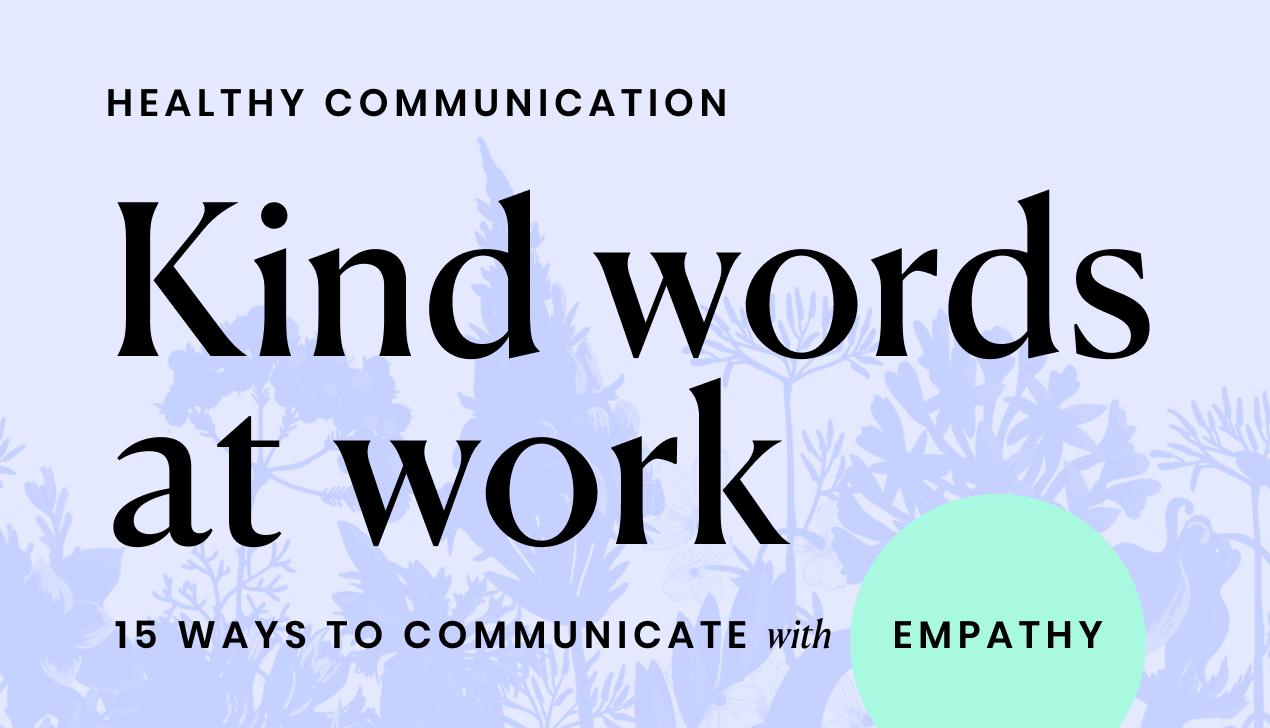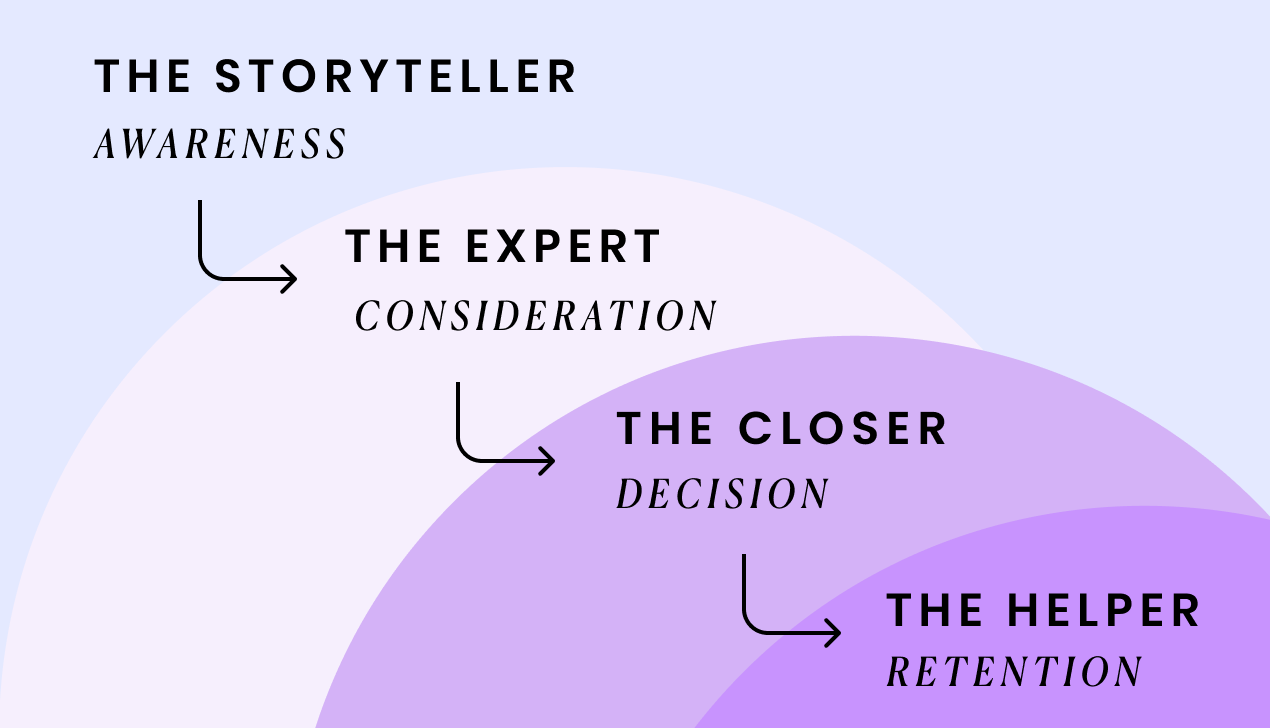Words at work
– 9 min read
When should you use a hyphen?
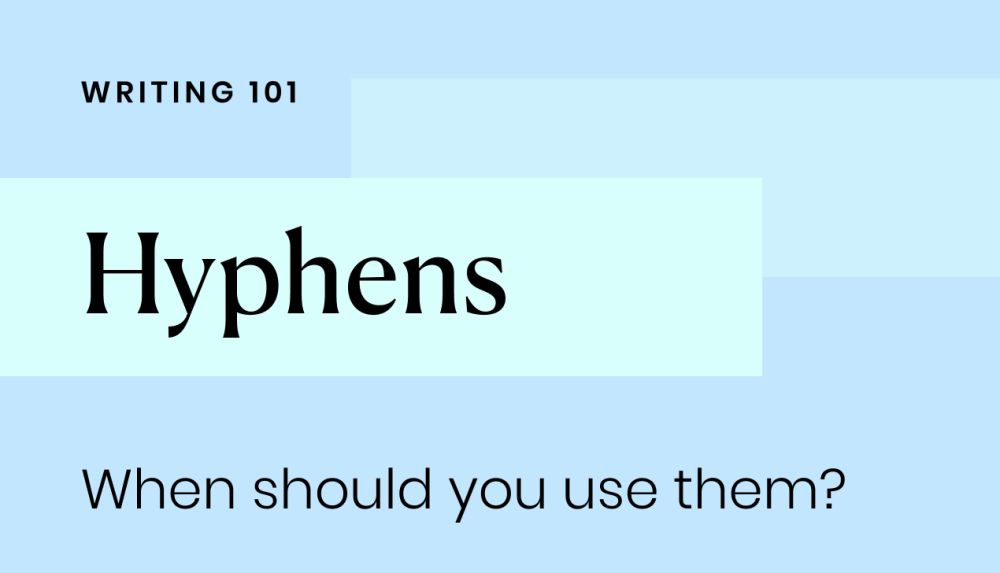
You’d most commonly recognize a hyphen as the punctuation mark or “small dash” between words that you create yourself. Like this one: good-vibes-spreading-things.
You could use it in, let’s say, a case where you’re discussing things that give you only good vibes. Instead of saying things that give me good vibes, each time you talk about such a thing, you can use the hyphenated (read: hyphen-containing) word.
In this sense, you can say that writers use hyphens to join words, creating versions of new glued-together words. In other cases, a hyphen is a necessity to tell your reader the words go together as in glued-together that I used in the previous sentence.
In still other cases, there are some ground rules to use hyphens. Not to forget, certain words are born hyphenated. Mother-in-law and editor-in-chief are two examples of hyphenated words.
Simply put, there are different ways you can use a hyphen. And in this post, we’ll tell you exactly how.
Ready to sharpen your hyphen-using skill? Let’s roll.
On a side note, a hyphen is pronounced as hai·fn (haɪ.fən/) or HY + fuhn
What is a hyphen?
A hyphen is a small dash-like punctuation mark that connects separate words together.
Basically, hyphens are joiners used in varying cases including:
• Joining words to indicate combined meaning
• Adding in a sentence’s grammar (example: attention-seeking group)
• Suggesting a missing element (example: in the short- and long-haul)
That said, when you go about using hyphens, the technique is called hyphenation. Similarly, words containing hyphens are called hyphenated words.
Hyphens are essential punctuation marks in a writer’s toolkit as they tell readers what words come together — better indicating what you’re saying.
Look at this example:
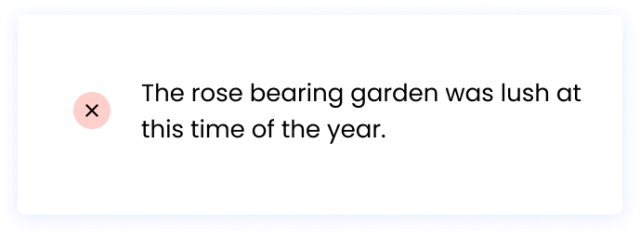
Know what’s wrong in that sentence? A reader can’t understand your description of the garden. They’d assume you’re using bearing to describe the garden. In reality, you mean rose-bearing to tell readers the garden is full of roses.
So the correct version is:
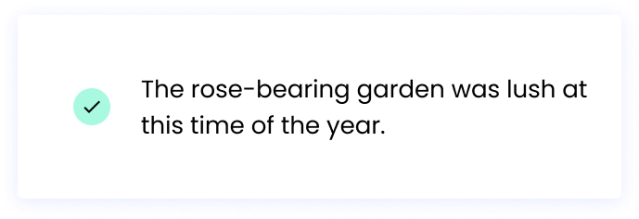
What does a hyphen look like?
A hyphen looks like a small dash or minus sign.
Hyphen: (-)
Since it looks like the minus sign, it’s also commonly referred to as the negative or -.
You’ll find a dedicated hyphen key on your keyboard. However, if you select the key and press enter, the hyphen sign will turn into a long, em dash in Mac.
A good way to avoid this issue is to remember that there’s no space around a hyphen. So whenever you’re using it, you don’t need to press enter at all.
Is a hyphen a dash?
A hyphen is a small dash, yes. But bear in mind that:
• A hyphen is different from the en and em dashes
• A hyphen can’t be used interchangeably with these dashes
Let’s get into the weeds of the matter. A quick recap: an en dash (–) is a medium-length dash that’s approximately the same width as the letter N. An em is the longest dash (—). In comparison, a hyphen is the shortest dash in the family.
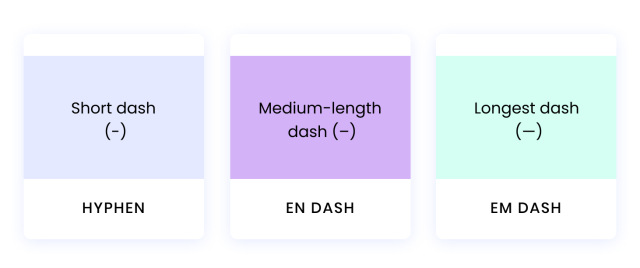
Beside the length, there’s also a difference of function (use) and spacing.
A hyphen comes between words with the aim of combining them — telling readers they’re one unit. You’ll learn more of when to use a hyphen below. An en dash shows a range in dates and numbers. Lastly, an em dash is used in place of comma, parenthesis, and colons. It helps writers sound more conversational in their writing — we discuss the em dash at length here.
Heads-up: The AP style guide uses hyphens for date and number ranges. The Chicago Manual of Style leans toward using en dash for the same.
As for the spacing in case of hyphen vs. dash, there’s never space around a hyphen. Depending on your brand or company’s style guide, there may or may not be space on either side of the en and em dashes.
When and how to use a hyphen
Before we dive into the depth of using a hyphen, here’s a primer:
• Hyphens are used based on grammatical rules in several instances.
• In certain cases, the writer needs to use their better sense to decide if they should use a hyphen for the sake of clarity.
• Use of hyphens depends on your company or university’s preferred style guide. For example, if you’re using AP style, well-being is hyphenated. In other cases, it goes without a hyphen (wellbeing).
It’s also essential to note here that style guides can change their grammar rules. So you’ll want to keep tabs to make sure your current usage of punctuation is correct.
Want a simple solution to when you’re in doubt with a hyphen’s use? We’ve got two for you.
One, refer to a good dictionary and check how the word in question is punctuated.
Two, talk to your department head (be it a brand you work with or a publication you write for) about their style guide. Then, save the style guide’s rules in Writer. This way, the AI-powered writing platform will point out incorrect use of the punctuation mark based on the manual of style you follow.
Let’s look at the hyphen-using rules now, beginning with the simple stuff.
• Some words are born hyphenated
These tend to be compound words or words that are formed when two or more words join to form new words. Since a single word with another single word are originally separate words, a hyphen is used to join them and indicate the formation of a new word.
Hence, some hyphenated words are:
• Follow-up
• Check-in
• Two-fold
• Short-term
• Up-to-date
• Father-in-law
• Merry-go-round
Heads-up: it’s not essential that all compounds have hyphens. Some compounds come without them,= — such as sunflower, grasshopper, skateboard, and everything — and are better known as compound words.
• Hyphens help join a prefix to a word
A prefix is a word or letter that comes before another word. Use a hyphen to combine the two (prefix + the target word).
Examples:
• Ex-girlfriend
• Trans-Atlantic
• Self-service
• Mid-1980s
• Co-exist
• Anti-immune
• Re-create
Pro tip: Hyphenate all words starting with the prefix self except self psychology.
• Hyphens also join words with a suffix
Like prefixes, suffixes join with other words with the help of hyphens. However, these come toward the end of words.
Examples:
• Child-like
• Shy-type
• New York-based (with a hyphen in AP style) and New York–based (with an en dash in Chicago style)
•. Hyphens come with high and low as well
Next, use hyphens when you’re connecting words with high and low. For instance, high-level, low-impact, high-earning, and so on.
In a sentence, this would look like this:
She earned a high-sum bonus for hitting all the sales targets in the last quarter.
• Hyphens have a role to play with numbers
All numbers from twenty-one through ninety-nine are hyphenated in written communication. This might not be the case according to certain style guides though.
In a sentence:
John just launched a cheat sheet with ninety-nine ideas to boost organic traffic.
• Hyphens with compound adjectives and numbers
Compound adjectives are compound words formed when two or more adjectives combine to modify a noun.
When there’s a number involved in the start of a compound adjective, use hyphens for connectivity so readers can tell the words have a combined meaning. For instance, 10-year-old and 2-minute recording.
In a sentence:
Everyone had to create a 5-minute video with a strong hook.
However, if the number isn’t at the start, but is the second word in a compound adjective, you don’t need to add a hyphen. Example: Type 2 immune reactions.
• Hyphens with compound adjectives and fractions
When a compound adjective has a fraction (half or quarter), you’ll find the two joined with, you guessed it, a hyphen. Examples: half-baked, one-quarter, three-quarters.
In a sentence:
She half-heartedly accepted his proposal to reconcile.
You’ll also use a hyphen when you’re pairing fractions with numbers to form compound numbers. This means:
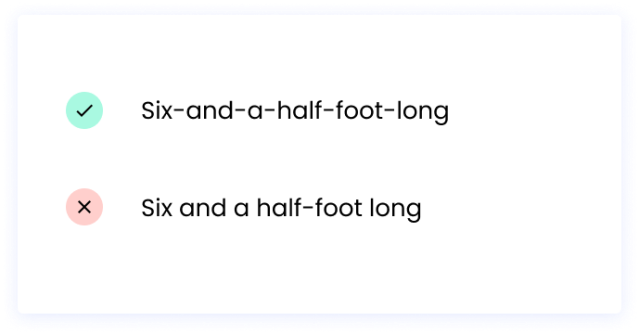
• Hyphens for original compound verbs and nouns
As a writer, you can also create your own compound verbs for humor, descriptive writing, and other unique situations.
In a sentence:
We hip-hopped our way through the boring party.
Similarly, use hyphens when creating original compound nouns to keep confusion at bay. The hyphen example we started this piece with — good-vibes-spreading-things — is a prime example of this.
In a sentence:
I’m altering my diet to become a no-soda person.
Bonus tip: Don’t hesitate to use a hyphen if it adds clarity. Here’s an example: The playground was a no-fight zone for kids.
• Hyphens help indicate continuation too
This is for instances when you write compound modifiers that have a common base. In such a case, you omit the modifier but show it’s linked by keeping the hyphen. Example: short- and long-term.
In a sentence:
He played with a two-headed, three-armed stuffed animal.
• Hyphens come with adverbs as well
Quick refresh: an adverb is a word that modifies a verb, another adverb, or adjective — typically ending with –ly.
The adverb very and those ending with -ly are, however, not hyphenated.
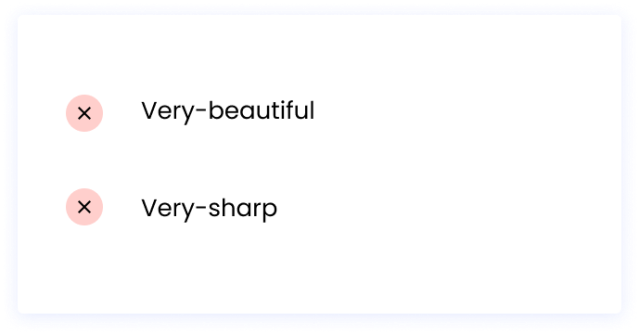
Adverbs modifying other adverbs often come with hyphen though. Example:
• A sister-headed online agency
• Their stern-looking boss
• Hyphens with compound modifiers
Use a hyphen when you’re using a two-word adjective (or compound modifier) that work as one adjective. The hyphen in such a case adds clarity to the fact that the adjectives are functioning as one unit.
Examples:
• Rock-solid
• Pet-friendly
In a sentence:
The office looked up to Microsoft for devising its child-friendly policies
• Hyphens also combine participles
A word that’s formed from a verb but is used as an adjective (example: laughing face) or noun (good breeding) is known as a participle.
Use a hyphen with present- or past-participle–containing compound modifiers as you would with other compound modifiers. Example: heavily decorated, gorgeous-looking.
In a sentence:
The irregular-shaped bug bit here.
Level up your writing game today. Install Writer for Chrome.




